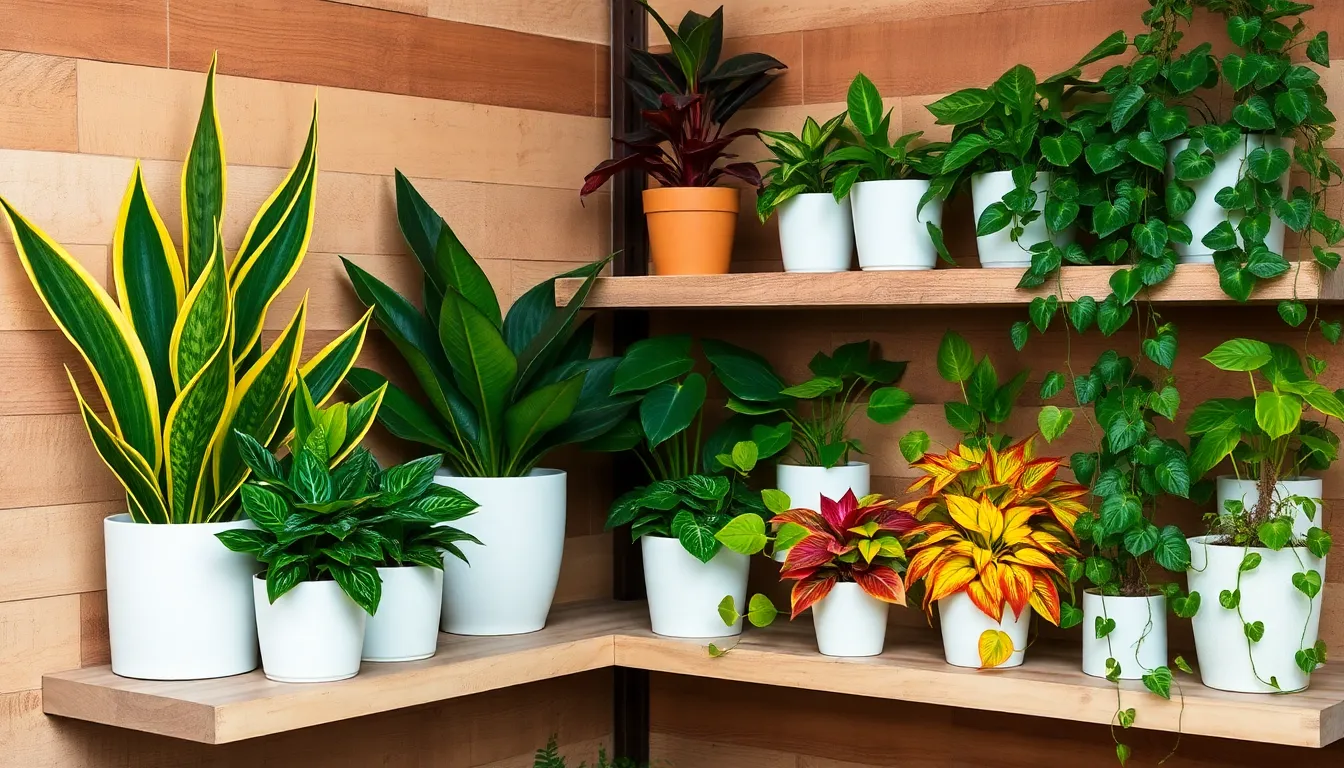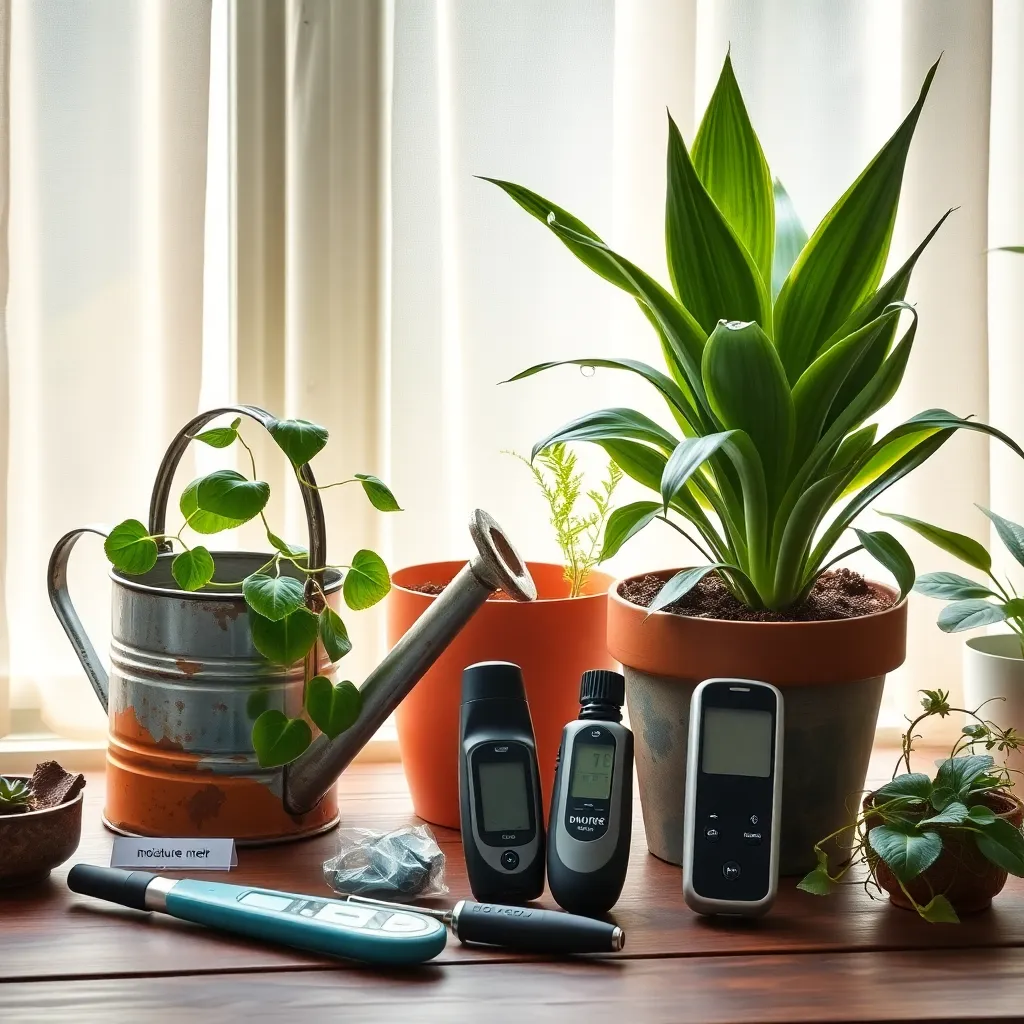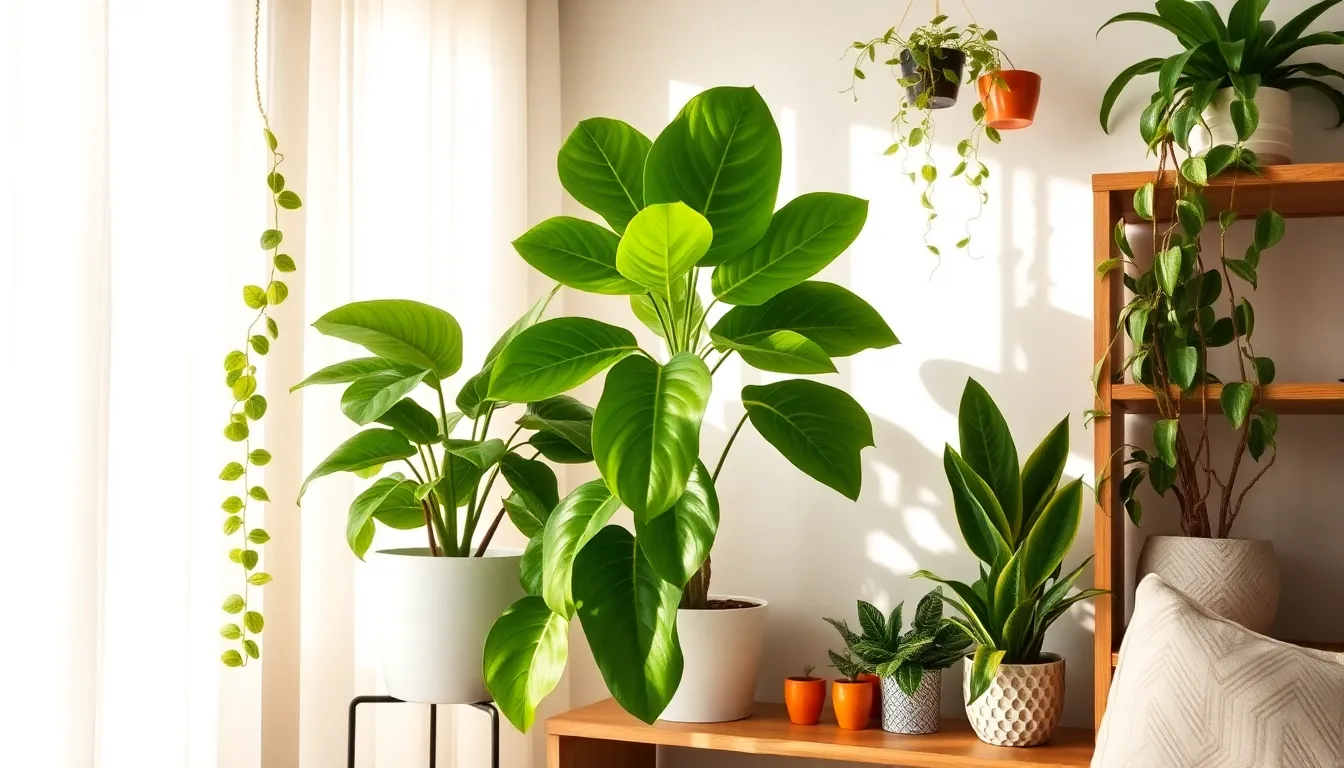Imagine transforming your home into a serene oasis with just a touch of greenery, all without the constant worry of high-maintenance care. For both the budding gardener and the seasoned plant enthusiast, low-maintenance houseplants offer a perfect balance of beauty and ease, making them a delightful addition to any indoor space.
Whether you’re just beginning your plant journey or have a well-established indoor garden, understanding which plants thrive with minimal attention can make all the difference. In this article, we’ll explore fifteen resilient houseplants that require little more than an occasional watering and a sunny spot, ensuring your indoor garden flourishes without becoming a full-time job.
Get ready to discover plants that not only enhance your home with their lush foliage but also fit seamlessly into your lifestyle. From the forgiving Snake Plant to the charming Pothos, you’ll learn why these plants are beloved by experts and novices alike, and how they can effortlessly enhance your living space. Grab your watering can and a touch of enthusiasm, and let’s dive into the world of low-maintenance houseplants that you’ll soon love.
Introduction to Easy Houseplants
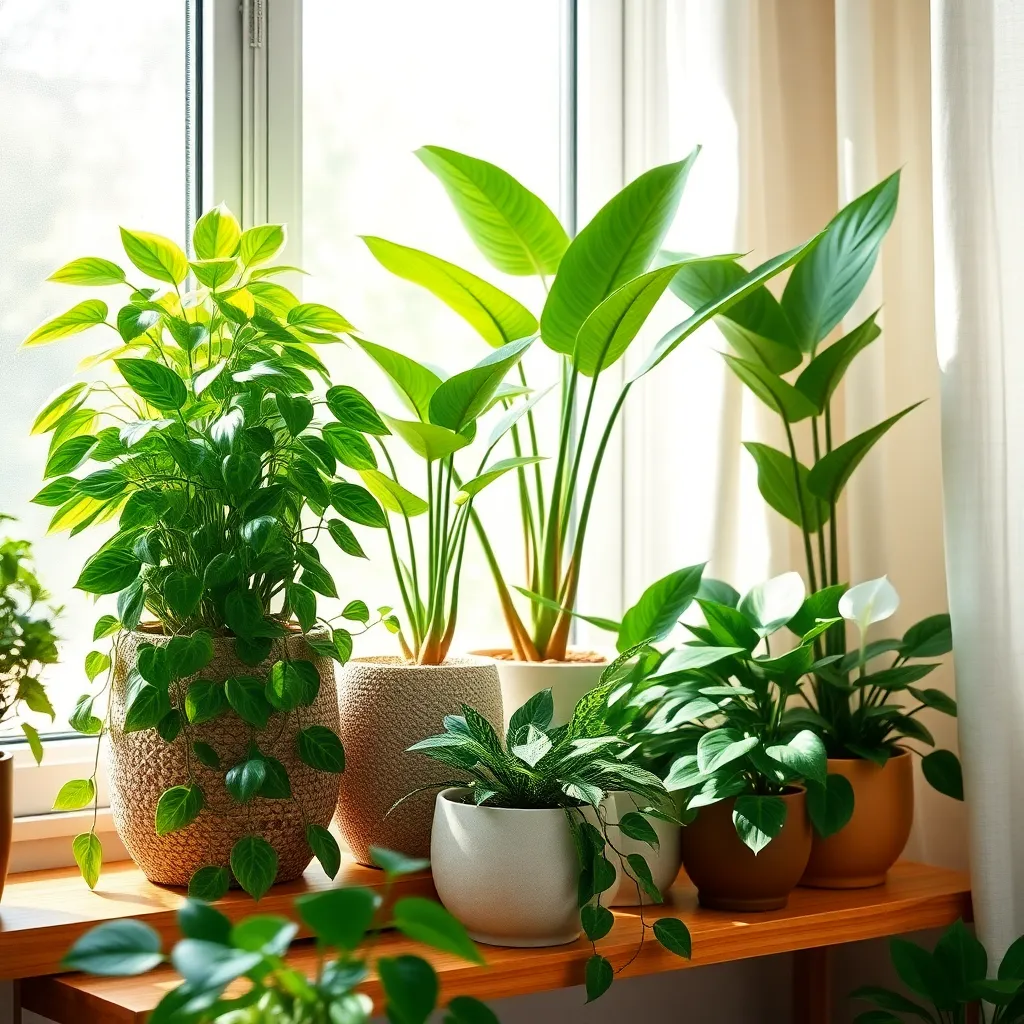
Starting with houseplants can be a rewarding venture, especially when you choose plants that are forgiving and low-maintenance. Easy houseplants like the Snake Plant or Pothos thrive with minimal attention, making them ideal for beginners.
One of the greatest advantages of easy houseplants is their adaptability to various indoor conditions. Most of these plants, such as the ZZ Plant, can tolerate low light and infrequent watering, making them an excellent choice for busy individuals.
When it comes to soil, these plants typically prefer a well-draining potting mix to prevent root rot. You can enhance drainage by adding some perlite or orchid bark to a standard potting soil, ensuring the roots stay healthy.
Watering is an area where many new plant owners falter, but with these hardy plants, less is often more. Allow the soil to dry out between waterings to avoid overwatering, and remember that most easy houseplants are drought-tolerant.
For those looking to take their plant care to the next level, consider the humidity preferences of your chosen species. While many easy houseplants are not fussy about humidity, misting or using a pebble tray can provide a humidity boost that helps them thrive.
Benefits of Low-Maintenance Plants
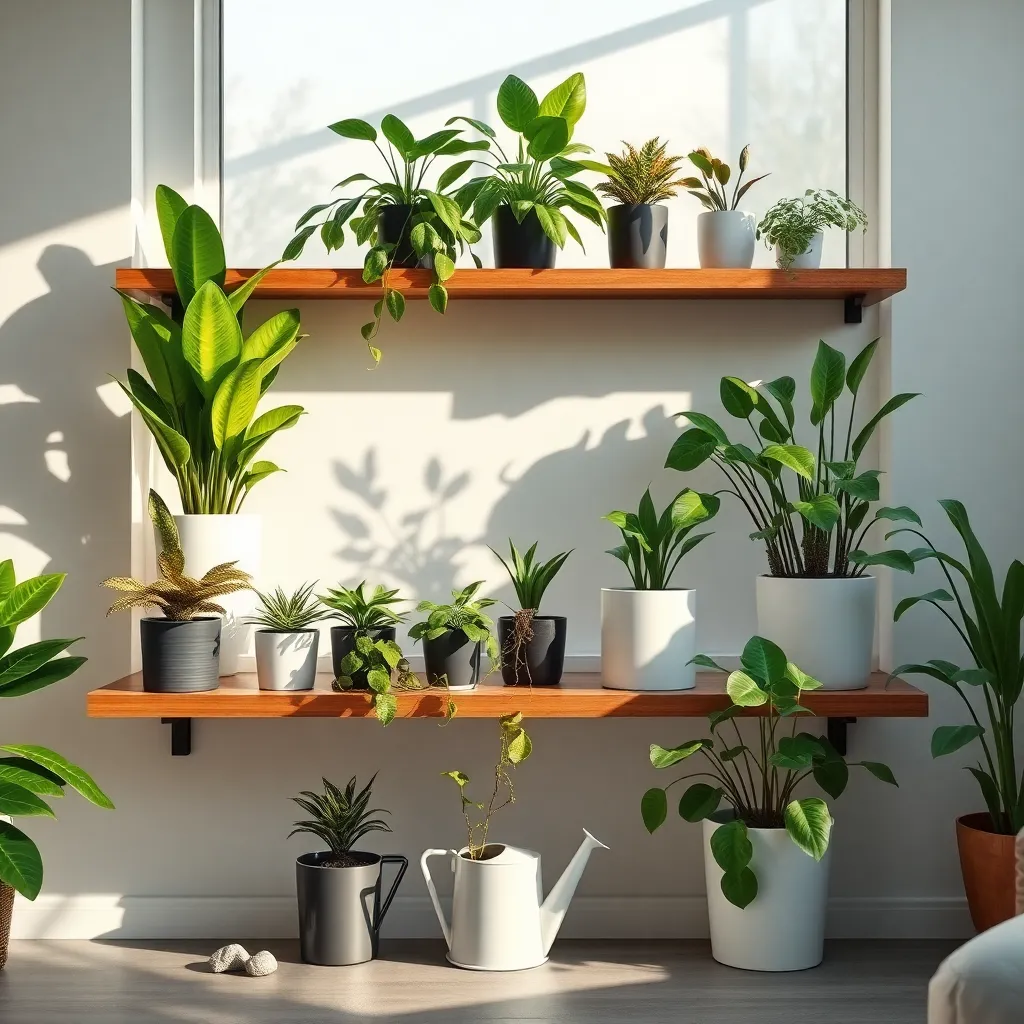
Low-maintenance plants offer a multitude of benefits, making them ideal choices for both novice and busy gardeners. They require less frequent watering, which not only conserves water but also reduces the time spent on daily plant care.
These plants often thrive in a variety of lighting conditions, meaning they can adapt to different areas of your home without needing constant repositioning. For beginners, this adaptability provides a forgiving environment to learn about plant care without the frustration of frequent plant deaths.
For experienced gardeners, low-maintenance plants can be an excellent way to add diversity to a plant collection without increasing workload. Common varieties, such as snake plants and pothos, are known for their resilience, making them perfect candidates for low-effort, high-reward gardening.
When it comes to soil, low-maintenance plants typically do well in standard potting mixes, often requiring only minimal amendments. Look for a well-draining mix to prevent overwatering, which is a common pitfall for indoor plants.
Moreover, these plants often have natural pest resistance, reducing the need for chemical treatments. This feature not only keeps maintenance low but also supports an eco-friendly gardening approach, aligning with sustainable practices.
For a successful indoor garden, consider the following tips:
- Choose plants like ZZ plants or succulents that thrive with less frequent watering.
- Ensure your chosen plants match the light conditions of your available spaces.
- Regularly check for pests, though infestations are less common with these resilient species.
By incorporating low-maintenance plants into your home, you not only beautify your space but also cultivate a personal sanctuary with minimal effort. Their robust nature and ease of care make them an excellent gateway into the joys of indoor gardening.
Choosing the Right Plant Space
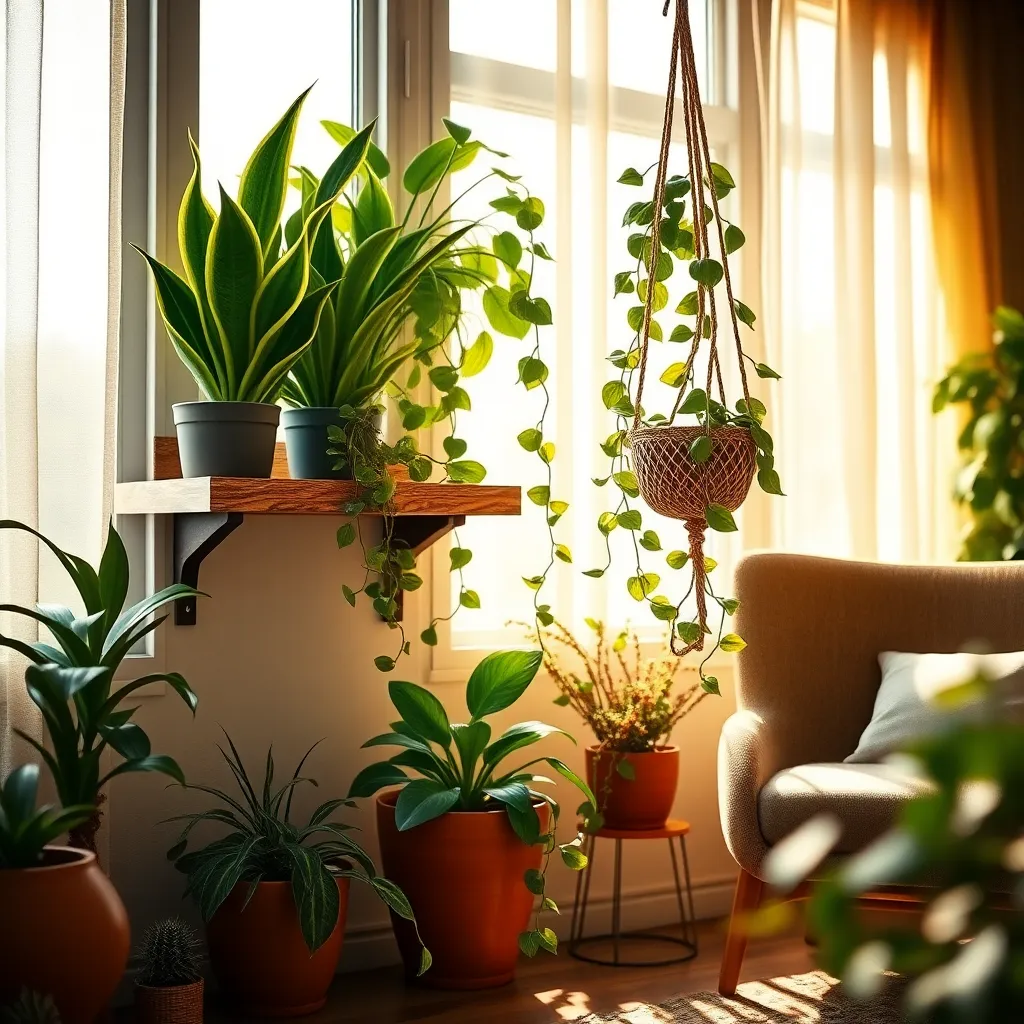
When selecting the right space for your houseplants, consider their light requirements first. Most low-maintenance plants thrive in bright, indirect light, so positioning them near a window with filtered sunlight is ideal.
Next, think about the humidity levels in your home, as some plants prefer more moisture in the air. Placing plants in a bathroom or kitchen can naturally provide higher humidity levels, benefiting species like ferns and peace lilies.
It’s also important to consider the temperature range that your plants will experience. Most houseplants prefer temperatures between 65°F to 75°F (18°C to 24°C), which is typical for indoor environments.
Beginner gardeners should start with hardy plants like snake plants or pothos, which are forgiving of varying conditions. For those looking to take it further, group plants with similar needs together to create microclimates, enhancing their growth potential.
Ideal Lighting for Indoor Growth
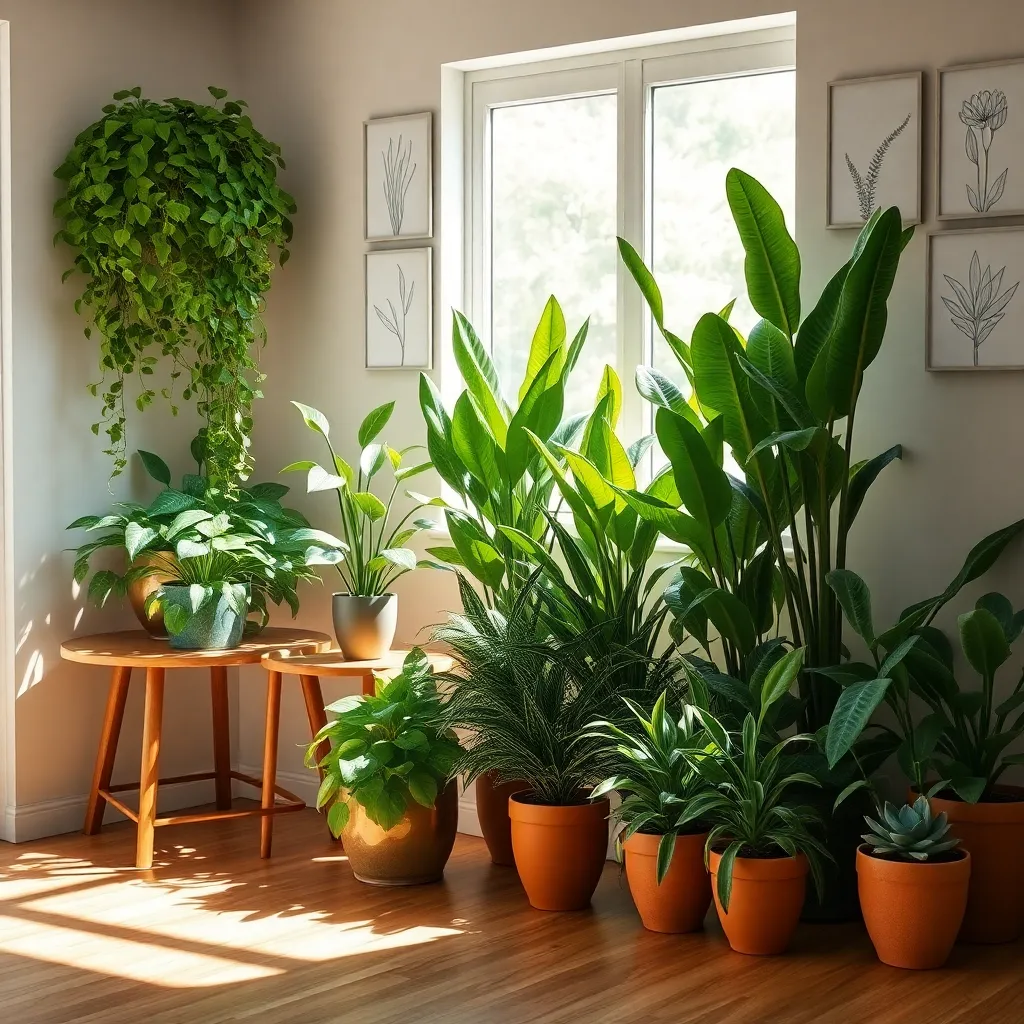
Understanding the lighting needs of your indoor plants can significantly enhance their growth and overall health. Many houseplants thrive in indirect or filtered sunlight, making them perfect for spots near windows that don’t receive direct sun.
While some plants are more forgiving with their light requirements, others may require specific lighting conditions to flourish. For instance, the snake plant and pothos are known for their adaptability to low light conditions, making them ideal for rooms with limited natural light.
Advanced gardeners can experiment with grow lights to supplement natural light, especially during shorter days in winter. LED grow lights are an energy-efficient option and can be placed at varying distances from your plants to adjust the intensity of light they receive.
For optimal results, regularly rotate your plants to ensure all sides receive equal light exposure, promoting even growth. If you notice your plant leaning towards a light source, it’s a sign that it needs more light and can benefit from being repositioned.
Simple Soil Solutions for Success
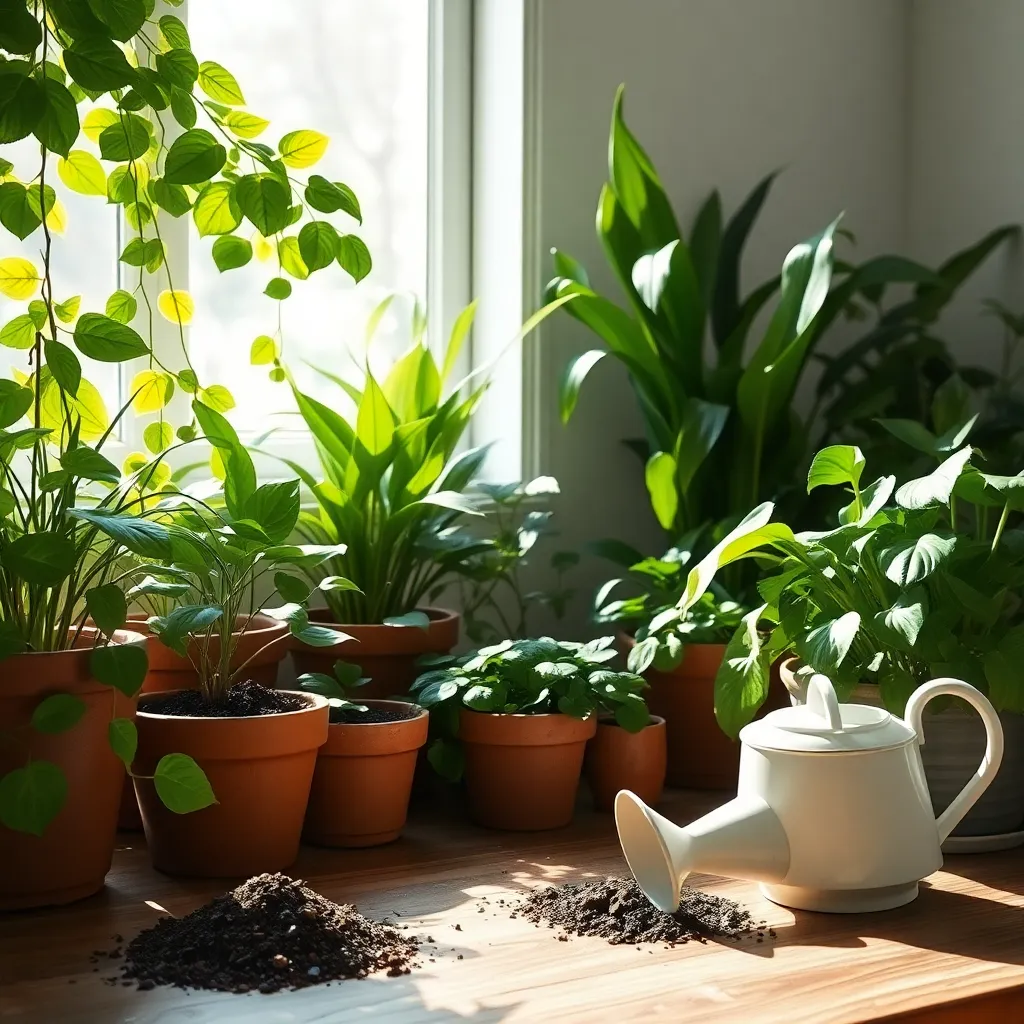
Creating the right soil environment is key to maintaining healthy houseplants with minimal effort. Start by selecting a well-draining potting mix to prevent root rot, which is crucial for most indoor plants.
For beginners, a basic potting mix that includes perlite or sand can improve drainage and aeration. If you’re ready for more advanced care, consider adding coconut coir or peat moss to retain moisture without causing waterlogging.
Each plant species may have specific soil needs, so it’s important to research your particular houseplant. For example, succulents thrive in a gritty mix, while ferns prefer a more moisture-retentive blend.
Consistency is vital—ensure your chosen soil mix matches your plant’s watering needs. Regularly check soil moisture by sticking a finger into the soil; if it feels dry an inch down, it’s time to water.
Watering Needs: Minimal and Easy
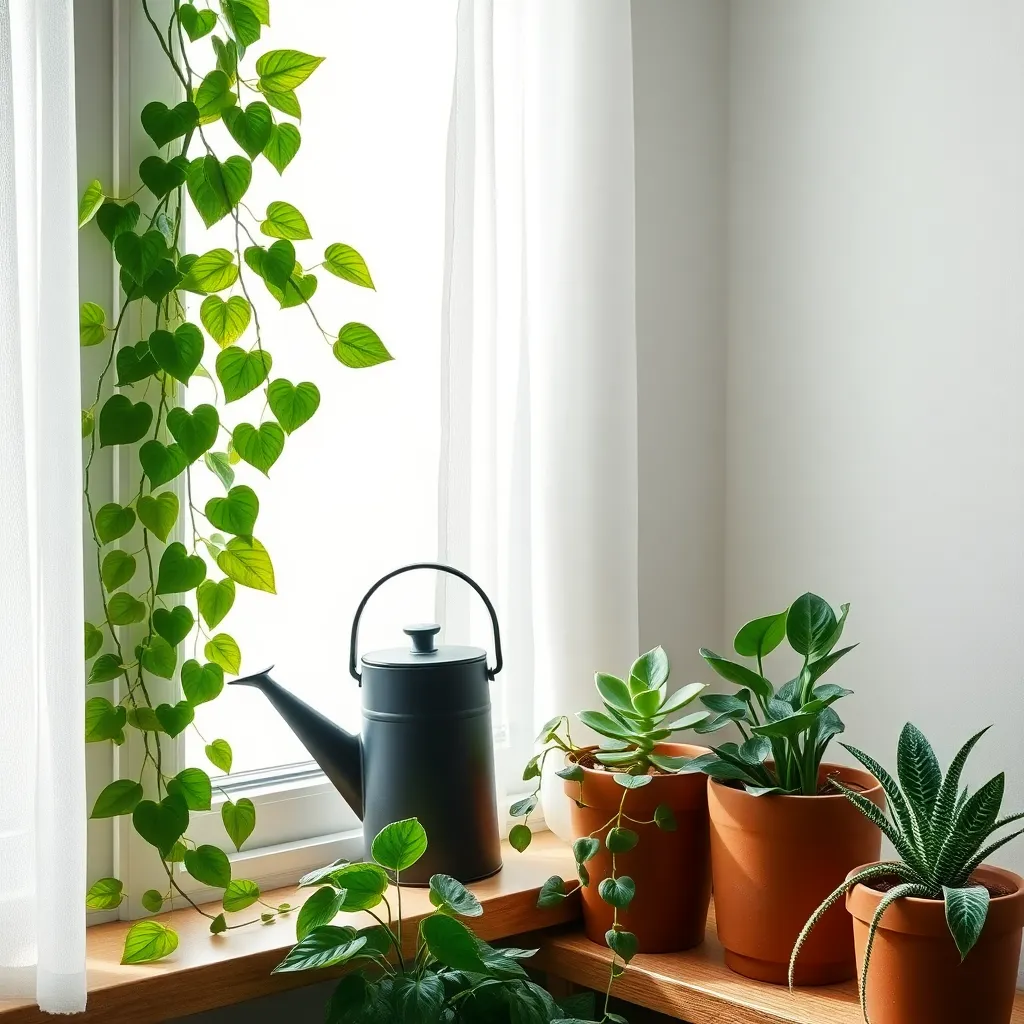
Watering is a crucial aspect of plant care, but some houseplants are designed to thrive with minimal attention. Succulents and cacti are excellent choices for those who prefer a hands-off approach, as they store water in their leaves and stems, allowing them to go longer between waterings.
These plants typically require watering only once every two to three weeks, depending on the humidity and light conditions in your home. To ensure their health, use a well-draining soil mix, such as one specifically designed for cacti and succulents, which allows excess water to escape.
For beginners, monitoring the soil moisture is a simple yet effective strategy. Insert your finger into the soil up to the first knuckle; if it feels dry, it’s time to water, but if it’s still damp, wait a few more days before checking again.
Advanced gardeners can consider adding a layer of gravel or small stones to the bottom of the pot to further enhance drainage. Pairing this with a pot that has adequate drainage holes will prevent root rot and ensure your plants remain healthy with minimal effort.
Temperature and Humidity Tolerance

Understanding temperature and humidity tolerance is crucial for keeping your houseplants thriving with minimal effort. Most low-maintenance houseplants can adapt to a range of temperatures, making them ideal for indoor environments. However, it’s essential to keep them away from drafty windows or air vents, which can cause stress.
Many popular houseplants, such as the snake plant and pothos, prefer temperatures between 60-75°F (15-24°C). They thrive in conditions where there’s no sudden fluctuation, so keeping them in a stable environment is key to their health. For those living in cooler climates, consider using a draft stopper on windows or doors to maintain consistent temperatures.
Humidity levels play a significant role in plant health, with most houseplants preferring moderate humidity. In dry indoor conditions, you can increase humidity by placing a tray of water near your plants or using a humidifier. For a low-cost option, group your plants together to create a microenvironment where they can share moisture.
For advanced care, consider using a digital hygrometer to monitor indoor humidity levels accurately. Aim to keep the humidity around 40-60% for most houseplants to prevent browning leaf tips and other stress signs. Remember, while many low-maintenance plants tolerate low humidity, a slight increase can enhance their growth and vibrancy.
Fertilization: Less is More
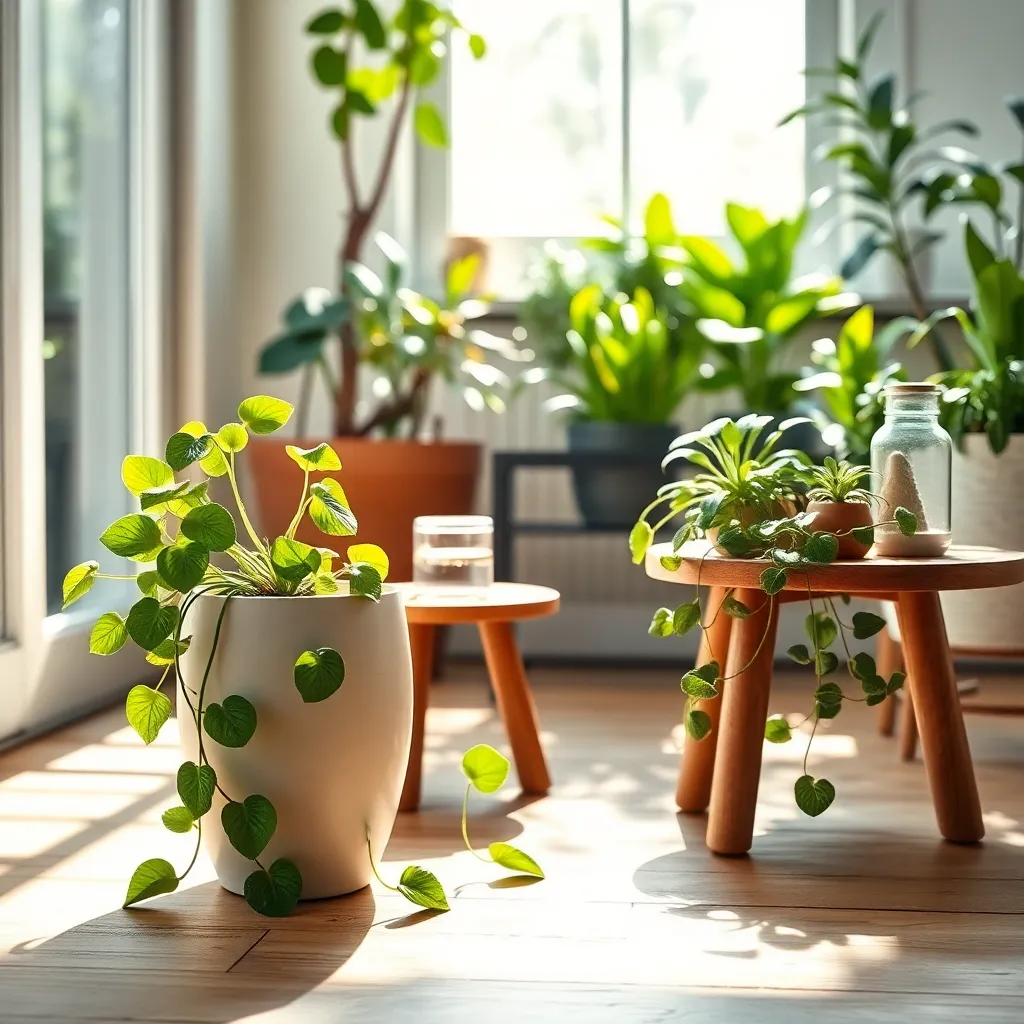
Fertilizing houseplants is essential, but it’s important to remember that less is often more. Over-fertilizing can lead to nutrient burn, harming your plants rather than helping them. For most low-maintenance houseplants, such as snake plants or pothos, fertilizing once every two to three months during the growing season is sufficient. Using a balanced, water-soluble fertilizer diluted to half strength can prevent over-fertilization and keep your plants thriving.
It’s crucial to understand the specific needs of each plant to avoid unnecessary fertilization. Some houseplants, like succulents, require very little fertilization due to their slow growth rate. On the other hand, faster-growing plants like pothos may benefit from slightly more frequent feeding. Always check your plant’s individual requirements and respond accordingly to ensure healthy growth.
Before applying any fertilizer, make sure the soil is moist; applying fertilizer to dry soil can damage the plant roots. As a general rule, only fertilize your plants during their active growing periods, typically spring and summer. During fall and winter, most houseplants enter a dormant phase and require less nutrition. This approach not only saves time but also aligns with the natural cycles of the plants, promoting their overall health.
For those looking to go the extra mile, consider using organic fertilizers like worm castings or compost tea, which provide a gentle nutrient boost without the risk of chemical burn. These options are more sustainable and can improve soil health over time. Remember, a little goes a long way, and observing your plants’ response is the best way to adjust your fertilization routine. Keep an eye on the leaves—yellowing can indicate nutrient deficiency, while browning tips might suggest too much fertilizer.
Pruning Techniques for Beginners
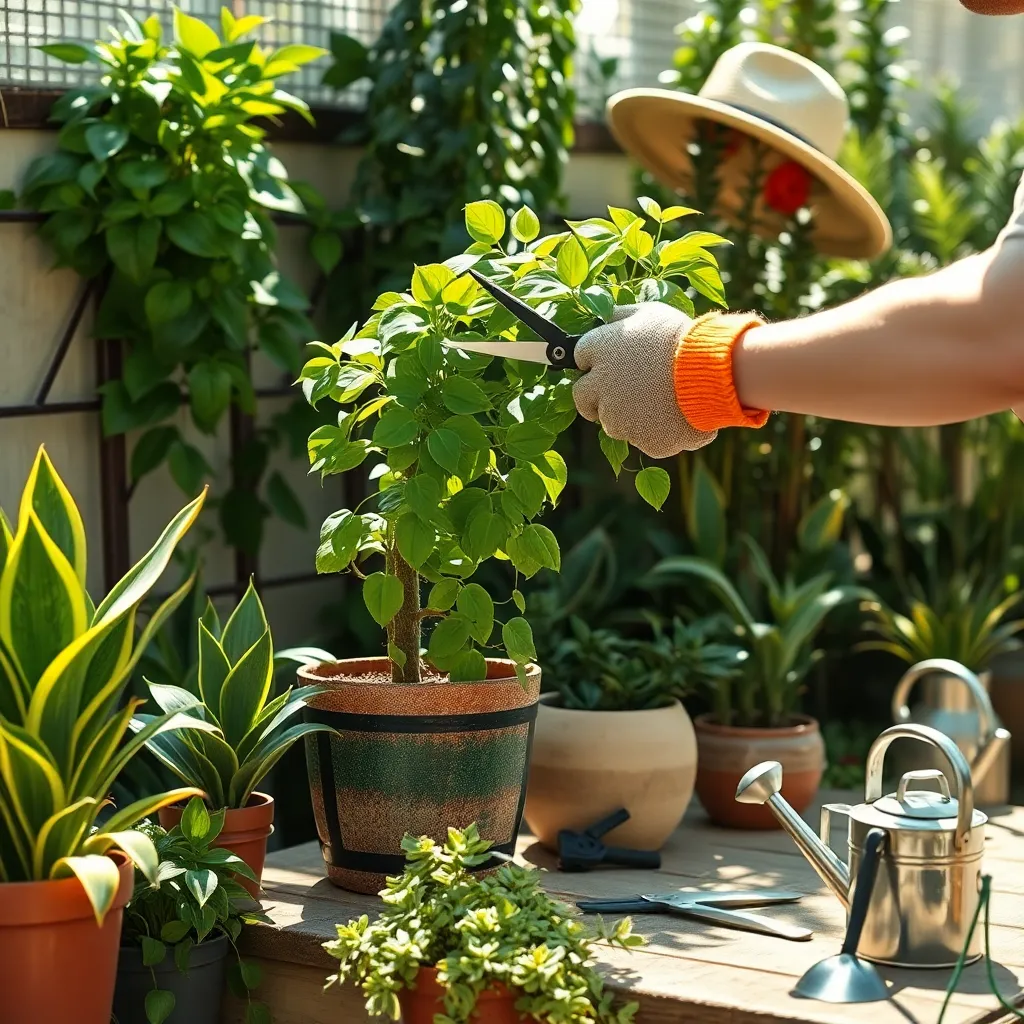
Pruning is an essential aspect of plant care that helps maintain the health and shape of your houseplants. For beginners, one of the most important tips is to use clean, sharp tools to prevent disease transmission and ensure clean cuts.
Start by identifying dead, damaged, or diseased branches, as these should be removed first to promote plant health. Always make cuts at a 45-degree angle, which helps the plant heal faster and minimizes water pooling on the cut surface.
Next, consider the plant’s natural growth pattern and remove any branches that disrupt its form. For plants like the popular pothos, cutting just above a node—the small bump where leaves and roots grow—encourages healthy new growth.
It’s also beneficial to thin out crowded areas within the plant to improve air circulation and light penetration. This is particularly important for bushy plants like the rubber plant, where adequate light ensures vibrant foliage and prevents mold.
As you gain confidence, try more advanced techniques like pinching, where you remove the tips of stems with your fingers to encourage bushier growth. Remember that regular pruning not only keeps your plants looking their best but also enhances their overall vitality.
Pest Control Made Simple
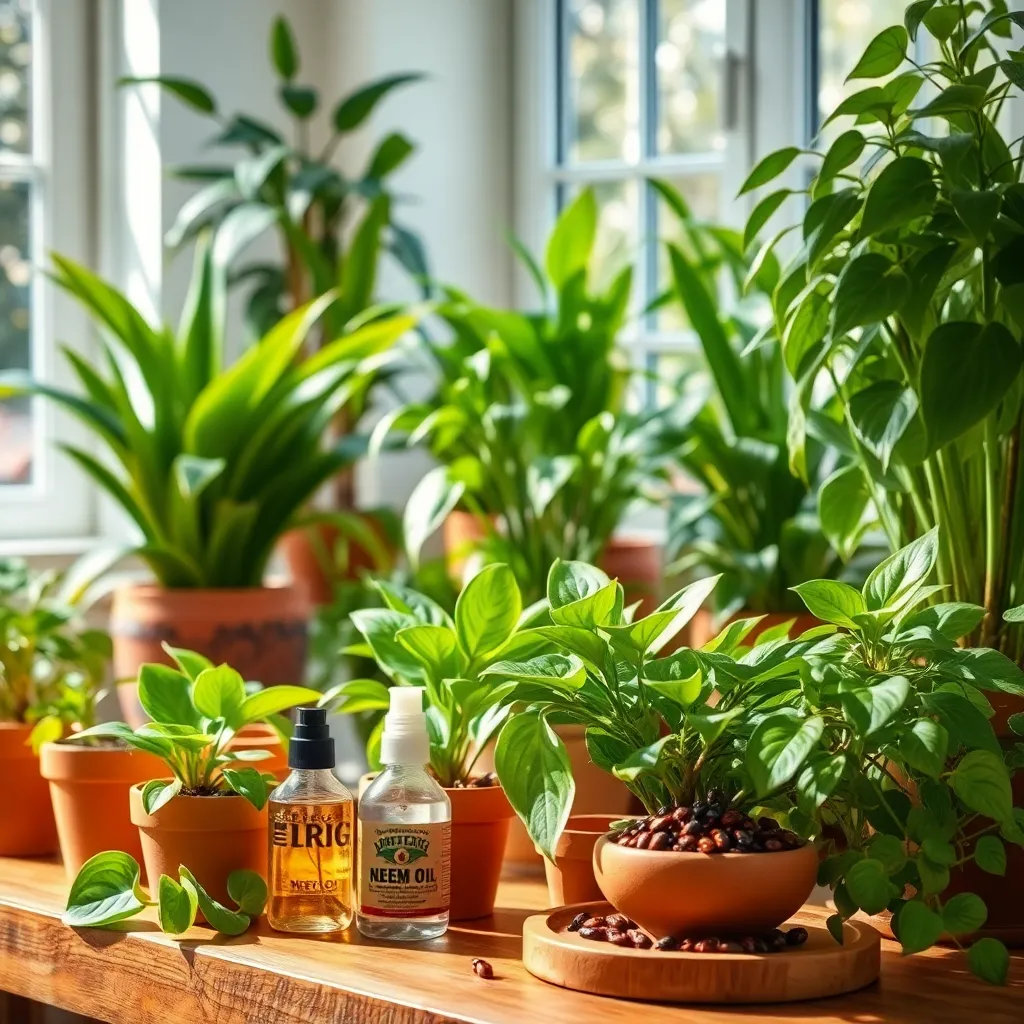
Managing pests in your home can be simple with a few strategic practices. Start by ensuring your plants are healthy, as robust plants naturally resist pests better than weak ones.
Regularly inspect your plants for signs of infestation, such as discolored leaves or webbing. Address any issues promptly by removing affected leaves or using a damp cloth to wipe off pests like aphids and spider mites.
Incorporate natural pest repellents like neem oil or insecticidal soap, which are effective and safe for indoor use. Dilute these treatments according to the instructions and apply them evenly over the foliage.
For more advanced control, introduce beneficial insects such as ladybugs or predatory mites, which can be purchased online or at garden centers. These helpful allies will target specific pests and keep their populations in check.
Pet-Friendly Plant Options
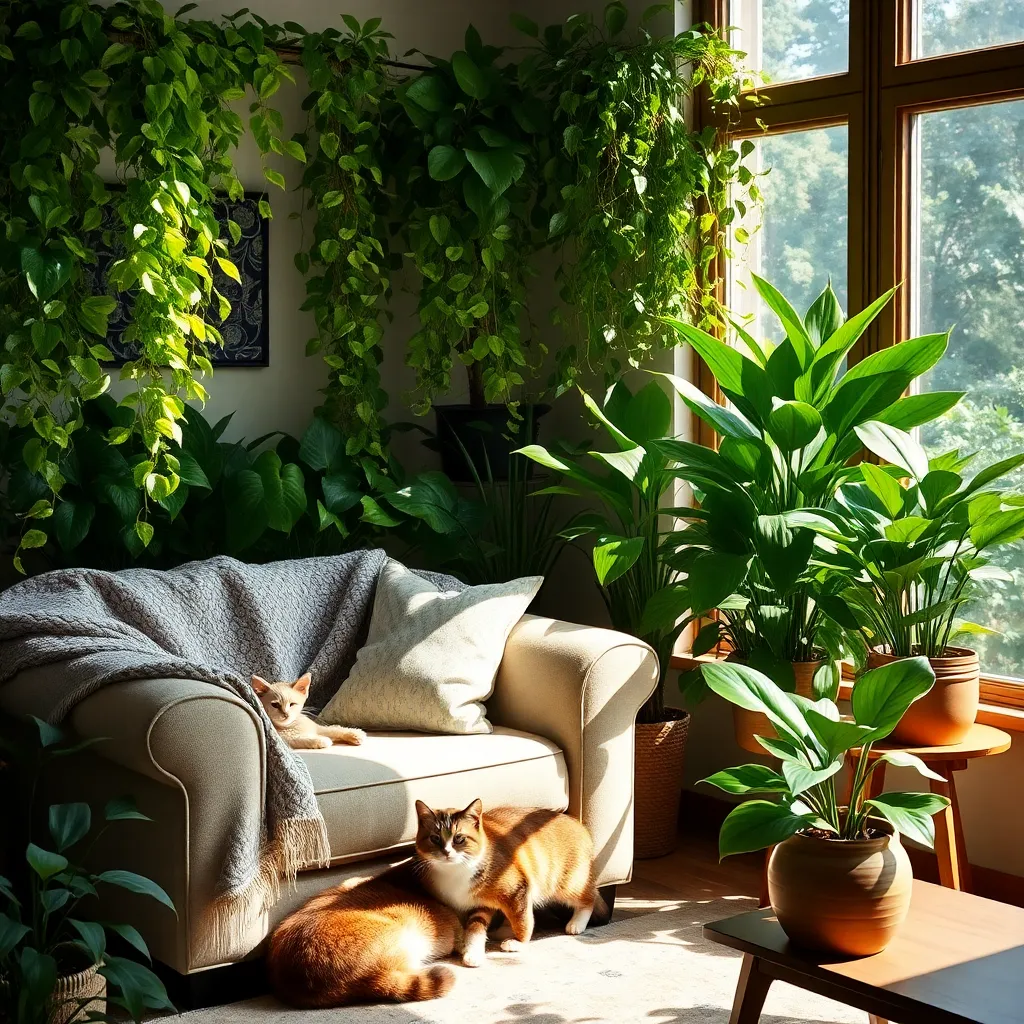
For pet owners, choosing houseplants that are safe for furry friends is crucial. One excellent option is the Spider Plant, known for its graceful arching leaves and ease of care.
This plant thrives in bright, indirect sunlight and can tolerate low light levels, making it versatile for any room. Spider Plants prefer well-draining potting soil and should be watered when the top inch feels dry, typically once a week.
Another safe choice is the Boston Fern, which adds lush greenery to any space. It enjoys humid environments, so misting the leaves or placing the pot on a tray of pebbles and water can help maintain moisture.
Boston Ferns require indirect sunlight and should be kept in a location with temperatures above 55°F. Use a rich potting mix, and water the plant regularly to keep the soil consistently moist but not waterlogged.
For a pop of color, consider the African Violet, which is non-toxic to pets and offers vibrant blooms. These plants thrive in moderate to bright indirect light and prefer a well-draining African Violet potting mix.
Water African Violets from the bottom to avoid leaf spots, ensuring the soil is moist but not soggy. Feeding them monthly with a balanced fertilizer can help promote blooming and overall plant health.
Top Picks for Busy Schedules
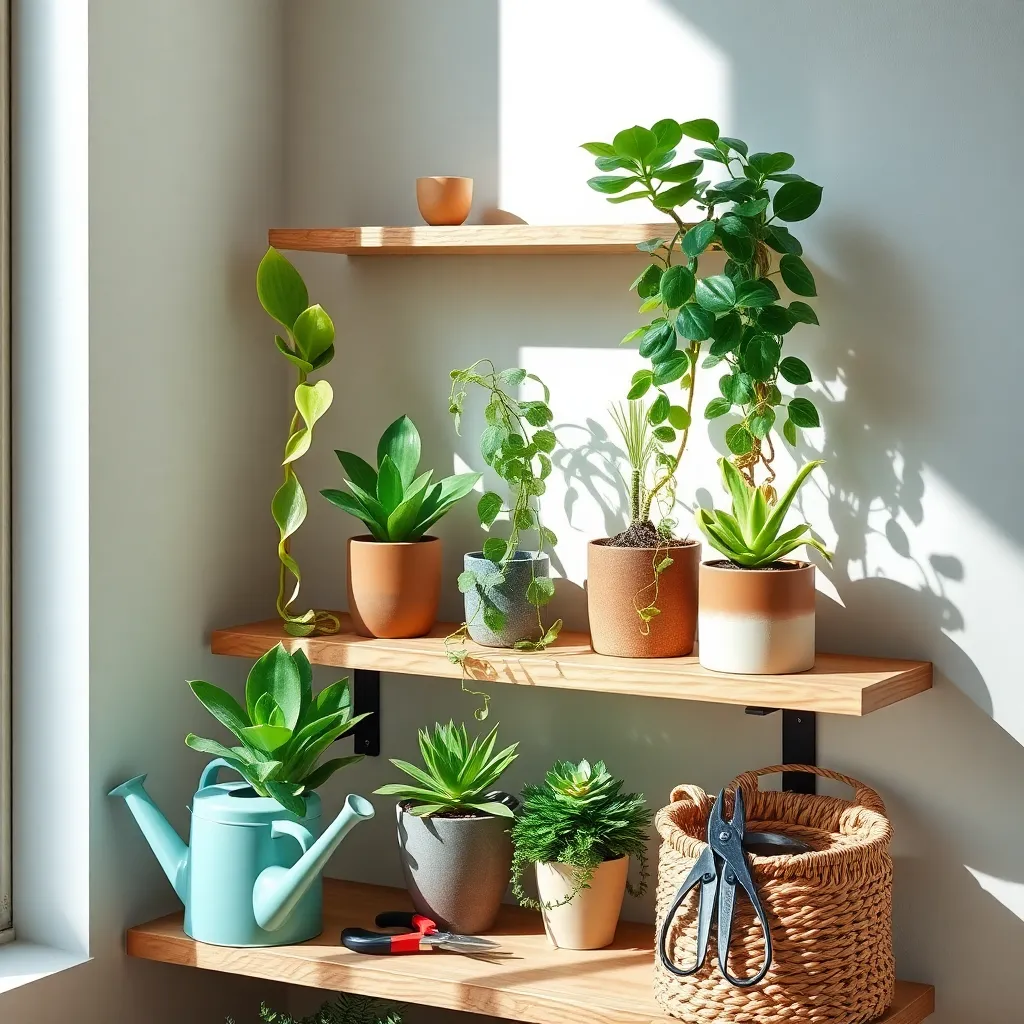
For those with hectic lifestyles, the Snake Plant, also known as Sansevieria, is a perfect choice. This resilient plant thrives on neglect and requires watering only every two to three weeks, making it ideal for busy individuals.
Another excellent option is the ZZ Plant, which is known for its ability to tolerate low light and infrequent watering. Simply place it in a well-draining potting mix, and it will reward you with lush, glossy leaves with minimal effort.
Consider adding the Pothos to your indoor plant collection, as it is incredibly easy to care for and grows quickly. Position it in indirect light and allow the soil to dry out completely between waterings to keep it thriving.
For an added touch of green without the fuss, the Spider Plant is a great choice. It can adapt to a variety of light conditions and only needs water when the top inch of soil feels dry, making it perfect for those who occasionally forget to water their plants.
Decorating with Low-Care Greens

Decorating with low-care greens can transform your space into a lush, inviting sanctuary with minimal effort. Consider plants like the Snake Plant or the Zanzibar Gem, both known for their resilience and easy care, making them ideal for busy individuals.
Snake Plants thrive in indirect light but can tolerate low light conditions as well, making them versatile for any room in your home. Water them sparingly—once every two to three weeks is sufficient—allowing the soil to dry out completely between waterings to prevent root rot.
Zanzibar Gems, also known as ZZ plants, are perfect for those who might forget to water regularly. These plants prefer a well-draining potting mix, so consider a blend of standard potting soil with added perlite or sand to enhance drainage.
For those seeking a touch of elegance, consider the Pothos, a hardy favorite known for its trailing vines. Pothos can thrive in a variety of lighting conditions, from low light to bright, indirect light, and they only need watering every 1-2 weeks when the top inch of soil feels dry.
To create an eye-catching display, use hanging planters or wall shelves to showcase your Pothos, allowing their vines to cascade beautifully. This not only maximizes space but also adds a vertical element to your decor, enhancing the overall aesthetic of your home.
Troubleshooting Common Plant Problems
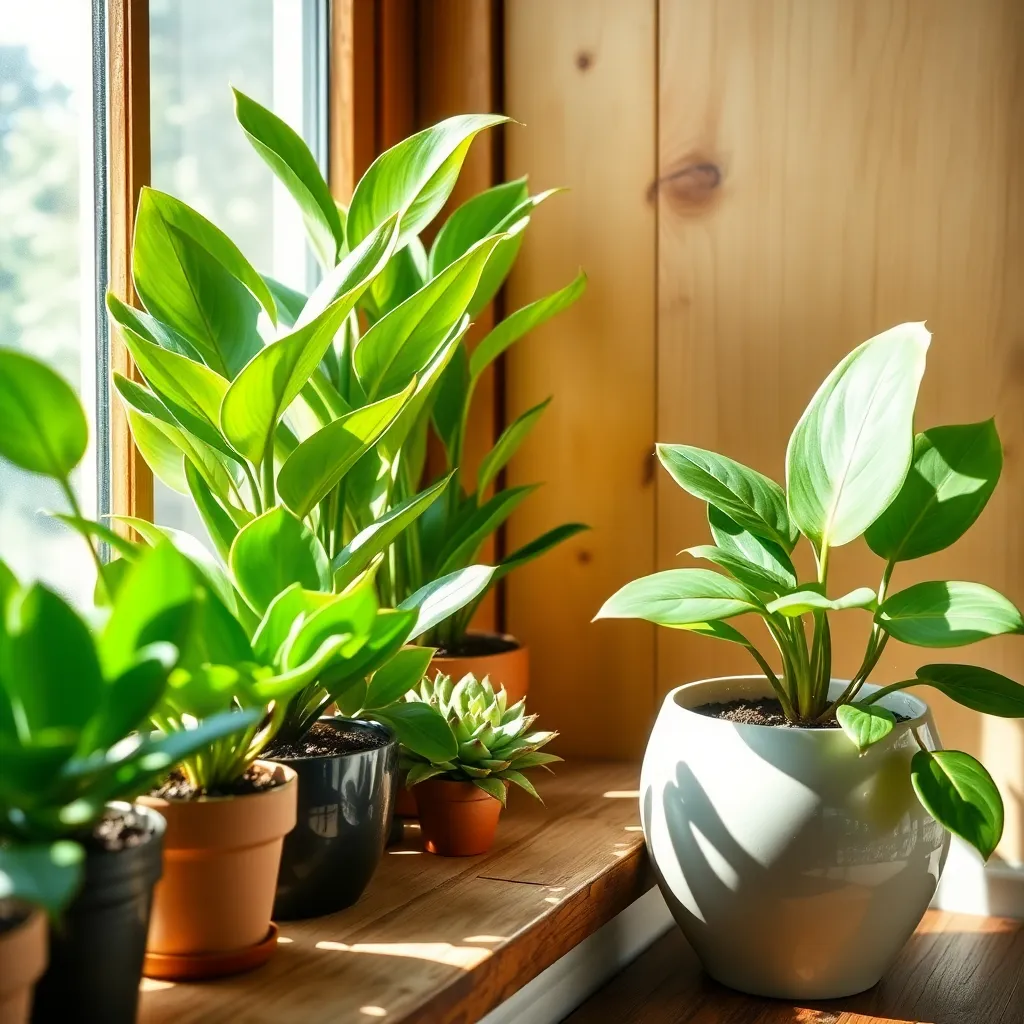
Even low-maintenance houseplants can encounter issues, but with a few simple adjustments, you can ensure they thrive. Yellowing leaves are often a sign of overwatering, so check the soil moisture and adjust your watering schedule accordingly.
On the other hand, brown, crispy edges may indicate underwatering or low humidity. Consider misting your plants or placing them on a tray of pebbles filled with water to increase humidity levels.
If you notice stunted growth, your plant might be lacking nutrients, or it could be root-bound. Repotting in fresh soil or feeding with a balanced liquid fertilizer every few weeks can help rejuvenate the plant.
Plants that seem to be leaning towards one side may not be receiving enough light. Rotate your plants periodically and ensure they have access to bright, indirect light to promote even growth.
Conclusion: Enjoying Stress-Free Greenery
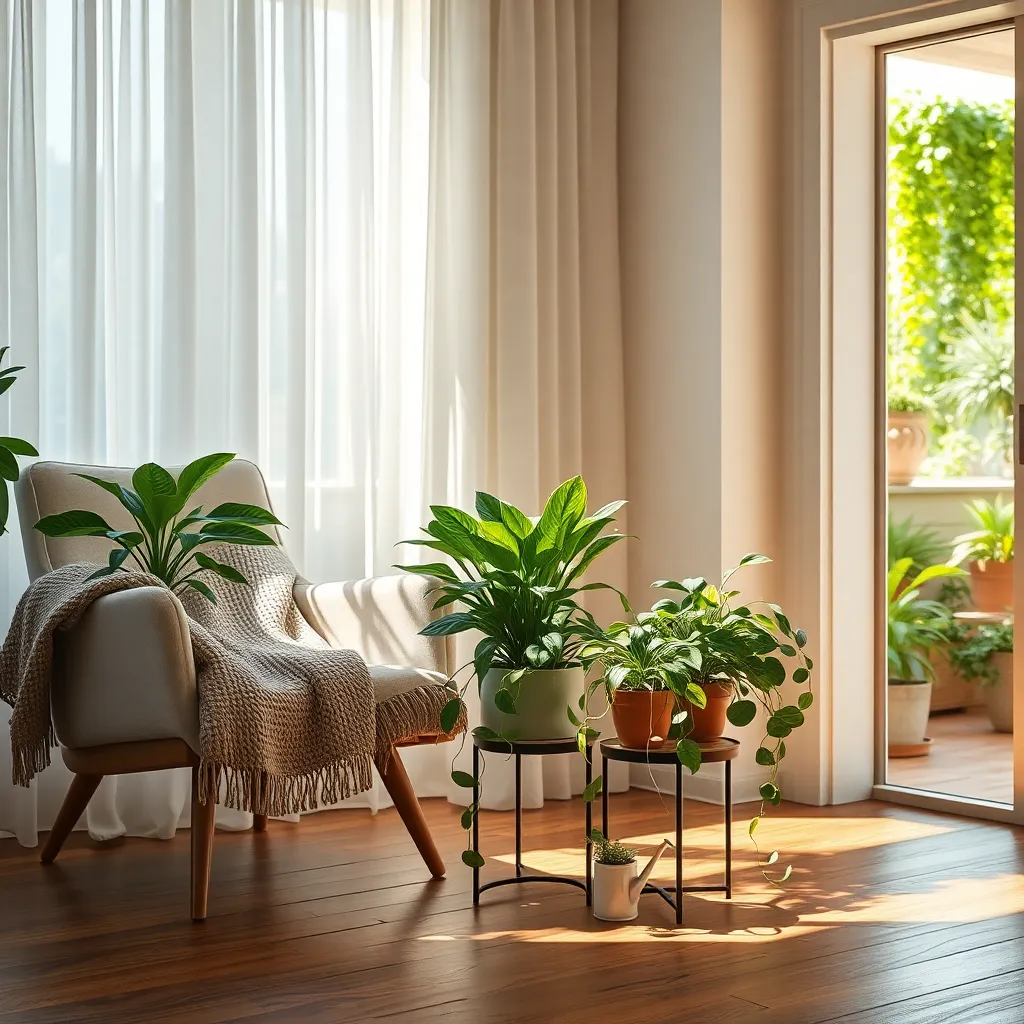
Once you’ve selected your low-maintenance houseplants, it’s time to enjoy the lush greenery they bring to your space without added stress. One of the best ways to ensure a thriving indoor garden is by setting a simple, consistent care routine that fits your lifestyle.
Start by placing your plants in the right environment; most low-maintenance varieties thrive in bright, indirect light. For example, the snake plant can tolerate low light, but it will grow more vigorously in brighter conditions.
Watering can often be where many gardeners overcomplicate things. A practical approach is to water most low-maintenance plants when the top inch of soil feels dry to the touch, rather than sticking to a rigid schedule.
It’s also beneficial to understand the specific needs of each plant species. For instance, use a well-draining cactus mix for succulents and cacti to prevent root rot, while a standard potting mix works well for most others.
For more advanced care, consider rotating your plants every few weeks to ensure all sides receive equal light, promoting even growth. Additionally, gently cleaning dust off leaves with a damp cloth can improve photosynthesis and keep your plants looking vibrant.
By following these straightforward tips, you can cultivate a stress-free indoor garden that not only beautifies your home but also enhances your well-being. Enjoy the satisfaction of nurturing your plants and watching them thrive with minimal effort!
Conclusion: Growing Success with These Plants
In nurturing relationships, much like caring for houseplants, understanding and patience lead to growth and harmony. This article explored 15 low-maintenance plants, each symbolizing a vital relationship concept: communication, trust, empathy, support, independence, quality time, compromise, appreciation, resilience, adaptability, shared goals, patience, forgiveness, humor, and passion. Just as these plants thrive with minimal effort yet bring immense joy, these principles can flourish with mindful attention and create lasting bonds.
Now, take the first actionable step: pick one concept from the list above and focus on integrating it into your relationships this week. Whether it’s expressing appreciation or practicing patience, small actions can lead to significant transformations.
Remember, relationships are a journey, not a destination. Bookmark this article now, so you can revisit these insights whenever you need a reminder or a gentle nudge towards growth. Each step you take today is an investment in tomorrow’s relationship success.
You have the power to cultivate thriving relationships, just as you would a flourishing garden. Embrace these principles, and watch as your connections blossom beautifully.

